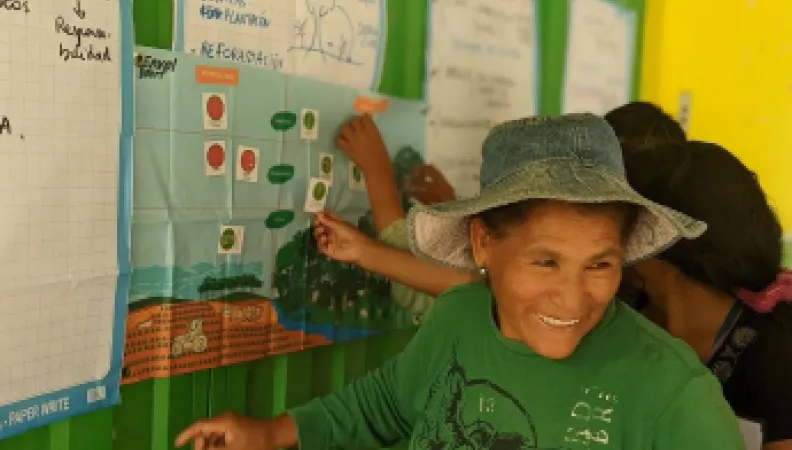Share the page
Protecting the Amazon forests and strengthening communities in Colombia and Peru (ConBosque)
Project
Published on


-
Project start date
-
Status
In progress
-
Estimated date of project termination
-
-
Project financing date
-
-
Financing duration
-
3 years
-
Type of program
-
FFEM
-
Global financing amount
-
4 000 000 €
-
FFEM financing amount
-
2 000 000 €
-
Project lead member institution(s)
-
Ministry of the Ecological Transition, Biodiversity, Forests, Sea and Fisheries
-
Country and region
-
Latin America, Colombia, Peru
-
Type of financing
-
Partners
-
AFD, Amazon Conservation Team, Maisons du Monde Foundation, SERNANP, Other co-financiers
-
Beneficiaries
-
Envol Vert France
-
Type of beneficiary
-
NGO, Foundation




The project aims to conserve 77,318 hectares of forest in the Colombo-Peruvian Amazon through knowledge and conservation of biodiversity and improvement of the quality of life and well-being of families present in these territories. The project works with rural and native communities, through a participatory and co-constructed support process and capacity building actions.
Context
The project unfolds in Colombia and Peru, in the Andino-Amazonian corridor, a hotspot for biodiversity. It targets regions marked by deforestation, armed conflicts and strong pressure on ecosystems. In partnership with peasant and indigenous communities, it promotes sustainable alternatives and strengthens traditional knowledge. The objective is to preserve forests, improve living conditions and restore social cohesion. The project thus contributes to the resilience of vulnerable territories that are essential for global climate balance.
Description
- Strengthen local governance and the participation of rural communities in the sustainable management of their territories.
- Preserve community forests by limiting pressure on ecosystems and protecting their integrity.
- Develop sustainable economic alternatives from forests to improve living conditions and slow down agricultural expansion.
- Promote biodiversity and raise awareness among populations about the protection of their environment.
- Promote sustainable practices such as agroforestry to restore landscapes and enhance local well-being.
Outcomes
- Produce scientific data in a collaborative manner on each site and widely disseminate them to stakeholders to enhance the territories.
- Document, formalise and use community conservation strategies as a reference for land restoration and preservation actions.
- Conserve 77,318 hectares of forests in 7 intervention zones through mechanisms adapted to each territory.
- Identify and develop economic alternatives to deforestation to diversify incomes and improve local living conditions.
Innovative and exemplary features
The project combines scientific knowledge and local knowledge through innovative approaches such as environmental DNA – which allows species to be identified without disturbing their habitat –, photographic traps or even collaborative applications used during participatory inventories conducted with communities. It contributes to
the local development of the Andino-Amazonian corridor by strengthening the autonomy of communities in the management of their territories, notably through cultural agreements and the creation of new forms of conservation adapted to local realities.
Sustainable Development Goals
ODD5 Gender equality

ODD13 Climate action

ODD15 Life on land

ODD17 Partnerships for the goals



